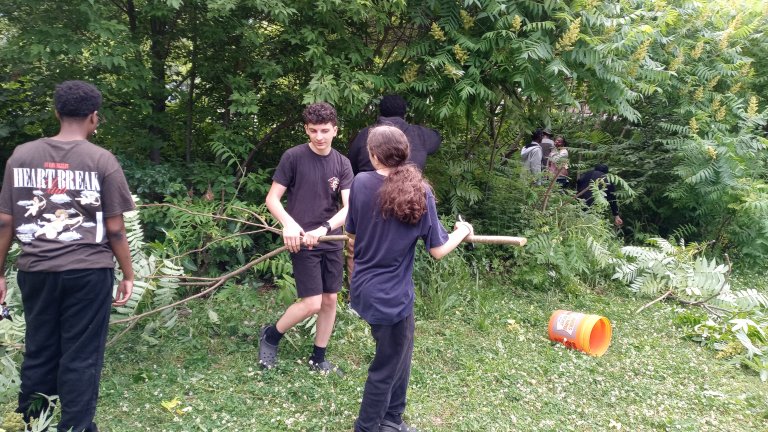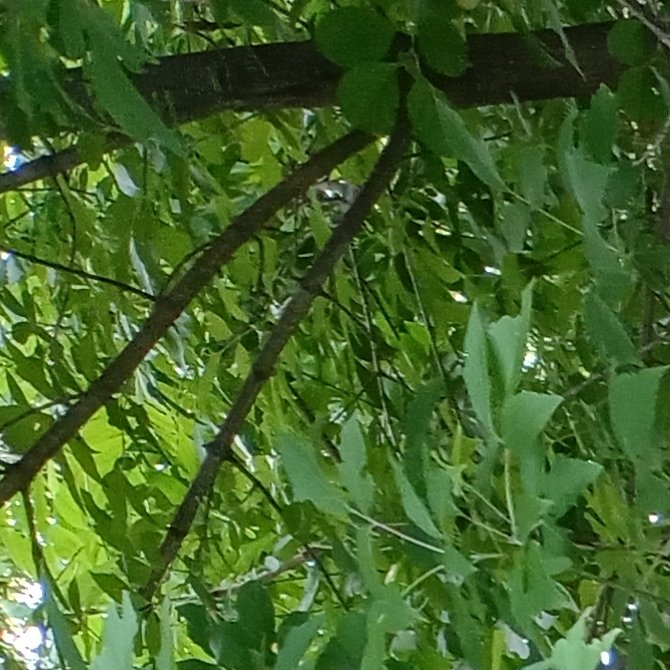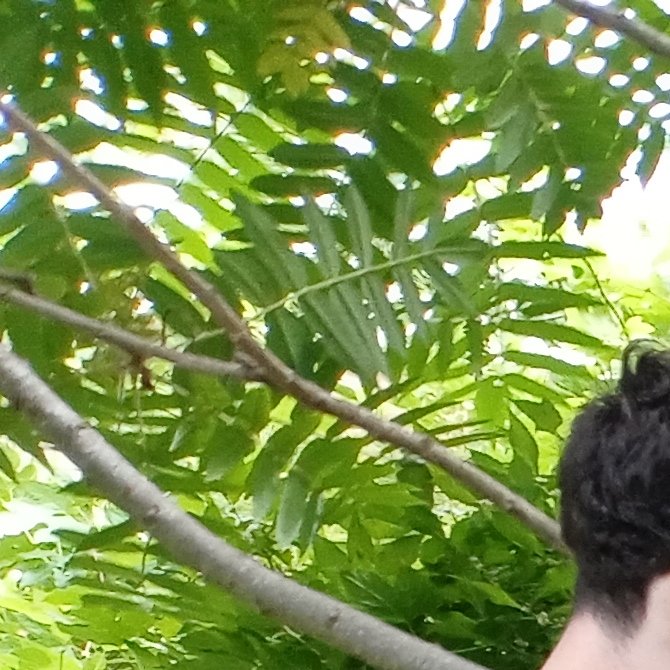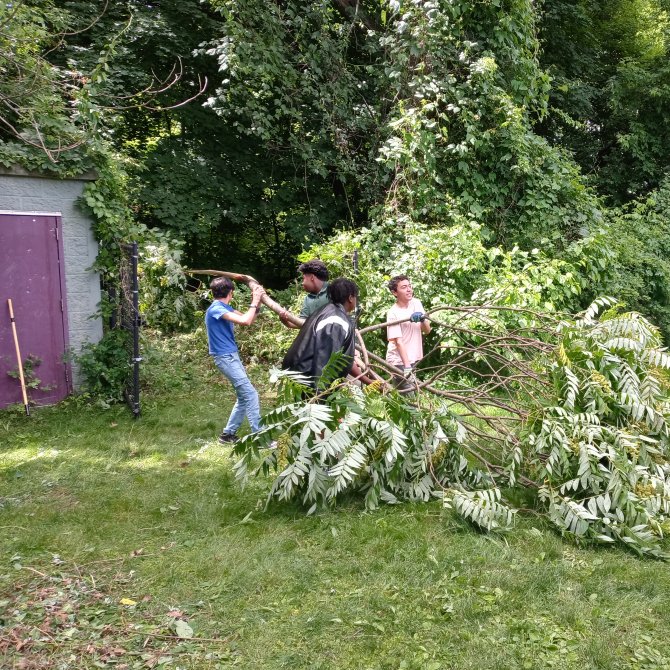
Grade Level: K-8
Expectations

Goal:
Students will gain a greater understanding of the impact of invasive plant species on the environment, and use this understanding when selecting plants for their gardens and yards.
Objectives:
- Students will be able to identify at least 2 invasive plant species.
- Students will assist in the removal of invasive plants from their schoolyard habitat.
- Students will be able to discuss the impact of invasive plants on the environment.
- Students will be able to discuss ways they can prevent the spread of invasive plant species.
Next Generation Science Standards:
- K-LS1-1. Use observations to describe patterns of what plants and animals (including humans) need to survive.
- K-ESS2-2. Construct an argument supported by evidence for how plants and animals (including humans) can change the environment to meet their needs.
- K-ESS3-3. Communicate solutions that will reduce the impact of humans on the land, water, air, and/or other living things in the local environment.
- 3-LS4-3. Construct an argument with evidence that in a particular habitat some organisms can survive well, some survive less well, and some cannot survive at all.
- 3-LS4-4. Make a claim about the merit of a solution to a problem caused when the environment changes and the types of plants and animals that live there may change.
- 4-LS1-1. Construct an argument that plants and animals have internal and external structures that function to support survival, growth, behavior, and reproduction.
- 5-ESS3-1. Obtain and combine information about ways individual communities use science ideas to protect the Earth’s resources and environment.
Environmental Connection

EPA priorities met by this lesson:
Education: Community Projects
Increasing young people’s understanding of the benefits of and participation in environmental stewardship related to clean water, soil and land revitalization, and management of ecosystem health. In an urban setting, this project will advance outdoor, place-based experiential education and community-based stewardship as the primary teaching tool.
Environmental: Ensure Clean and Safe Water
Supporting educational and stewardship efforts focused on restoring watersheds and their aquatic ecosystems to protect human health, support economic and recreational activities, and provide healthy habitats for fish, plants, and wildlife.
As environmental stewards, students will remove invasive plant species from their schoolyard habitat. This will promote the survival of native species, and increase the health of the schoolyard environment.
Experience

Introduction:
The teacher will introduce the lesson by reading either They are Here, by Ronald Smith, or Invasive Plant Species (Invaders from Earth), by Richard Spilsbury. The teacher may also share the UCONN invasive plant list.
Activity:
In the schoolyard habitat, playground, or school garden, the teacher will point out some common invasive species. The class will discuss the impact of invasive species, how they got to the schoolyard, and why it may be beneficial to remove them.
The teacher will demonstrate how to identify and remove invasive plant species (some children may choose to wear gardening gloves, or disposable gloves). Children may also use trowels to help remove stubborn roots. The teacher will explain the importance of removing the entire root of the invasive plant, and not just breaking off what is seen above ground. Older students may use loppers to remove branches from larger plants, such as Tree of Heaven, in order to make removal of the entire plant easier.
Discussion:
Once the area is free of invasive species, the teacher will gather the students to discuss the environmental impact of the species the students removed. As a group, students will discuss various ways they can prevent invasive species from taking over their schoolyard habitat in the future.
Extensions:
- Select an invasive plant species to research and present to the class or the school.
- Share knowledge of invasive plant removal with other classes at the school.
Materials needed:
- Invasive plants handout
- They are Here by Roland Smith OR Invasive Plant Species (Invaders from Earth) by Richard Spilsbury
- Garden gloves
- Trash buckets or bags
- Loppers
- Trowels
Exhibition
Through this lesson, students successfully identify at least two invasive plant species, and demonstrate their knowledge by assisting in the removal of the invasives from their schoolyard habitat. Students are also able to discuss the environmental impact of invasive plants in a whole group discussion. They are also able to propose ways they can prevent the spread of invasive plant species.
